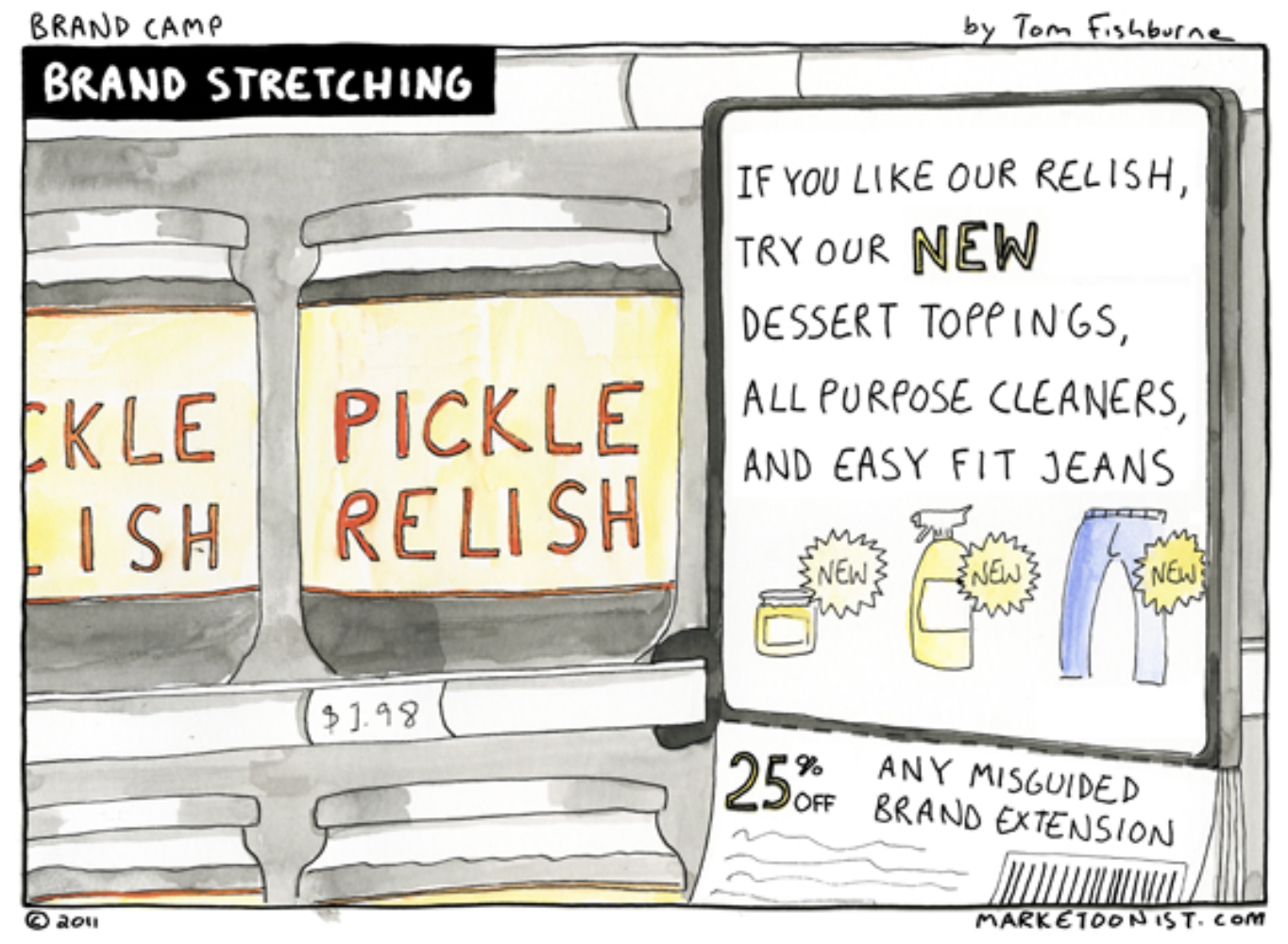What’s the best way of assessing brand stretch ideas? A bit of cartoon genius from Tom Fishburne that I use in our brandgym Academy short course on Brand Stretch beautifully illustrates the risks of over-stretching your brand. We call this “brand ego tripping”: when you get too big for your brand boots.

An important watch-out here is to not overly focus on brand equity when assessing brand stretch ideas. Be especially wary about what consumers say in research. Strong and well-liked brands tend to be quite elastic and consumers are open-minded about which categories their favourite brands could, in theory, stretch into. Take for example for the Method brand of household cleaning products that Tom also worked on, where “the number one category requested by Method consumers was toothpaste.”
In fact, when assessing brand stretch ideas, “Can the brand stretch into category x?” is the wrong question to ask, I suggest. The right question is “Can we make any money out of category x?” And by make money, I mean create a profitable, sustainable business model.
Below I suggest how you can go about answering this question, based on extracts from the Grow the Core book.
1. Size of prize
The first thing to consider is how big the business opportunity is. This is based on
- The size and growth of the market you want to stretch into
- The competitive intensity and, most importantly
- The strength of your value proposition: ere you really adding value versus existing offers?
Many of Virgin’s brand stretching efforts flopped as they were brand ego trips that failed to add value in the new market. Virgin Cola, Virgin Vodka and Virgin Jeans slapped the Virgin logo on unremarkable products and this was not enough to take on the established leader brands, Coke, Smirnoff and Levis in their respective core markets.
In contrast, Virgin’s brand stretching worked better when they leveraged their brand and know-how to add real value in new markets, especially in service businesses. For example, Virgin Atlantic has a multitude of features such as on-board massages, free ice creams and high tech video games deliver relevant differentiation.
2. Ability to win
The second point to consider is the one that seems to often be less well thought through. Ability to win looks at factors such as cost position, route-to-market, in-store leadership and sustained marketing support.
Tom explains in his post how Method stretched successfully from window cleaners to hand soap, but was unsuccessful in body washes and shaving creams. Part of the failure in these latter two personal care categories could have been to do with the added value of the product propositions. However, another factor would have been the ability to compete against the likes of P&G, Unilever and Gillette. My guess is that Method would have found it harder to have the right levels of sustained marketing investment and in-store presence in body wash and shaving than they did in window cleaners and hand soap.
One thing to keep in mind when looking at ability to win is that this is a long-term question. Are you prepared to invest heavily not just in the launch year but in years 3, 4 and 5, by which time the incumbent brands may have reacted to your launch by increasing their spend?
Combining these two criteria, Size of Prize and Ability to Win, allow you to then asses brand stretch opportunities against one another. Below is an example for the Special K brand to illustrate how this can work.
In conclusion, as with all of marketing, the best way to look at brand stretching is to avoid being over theoretical and instead to “follow the money”. Think less about brand equity leveraging, and more about creating a sustainable, profitable business model.
To explore brand stretch further, check out this earlier post.
As mentioned earlier, you an explore brand stretch further on our affordable, easily accessible brandgym Academy short course here.